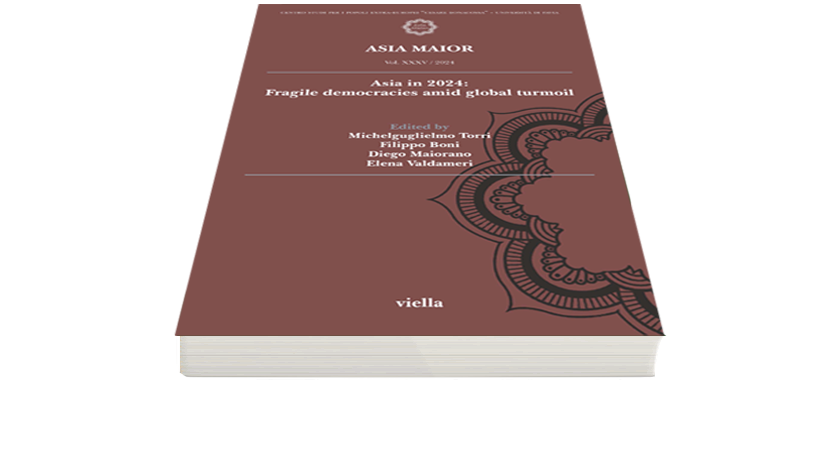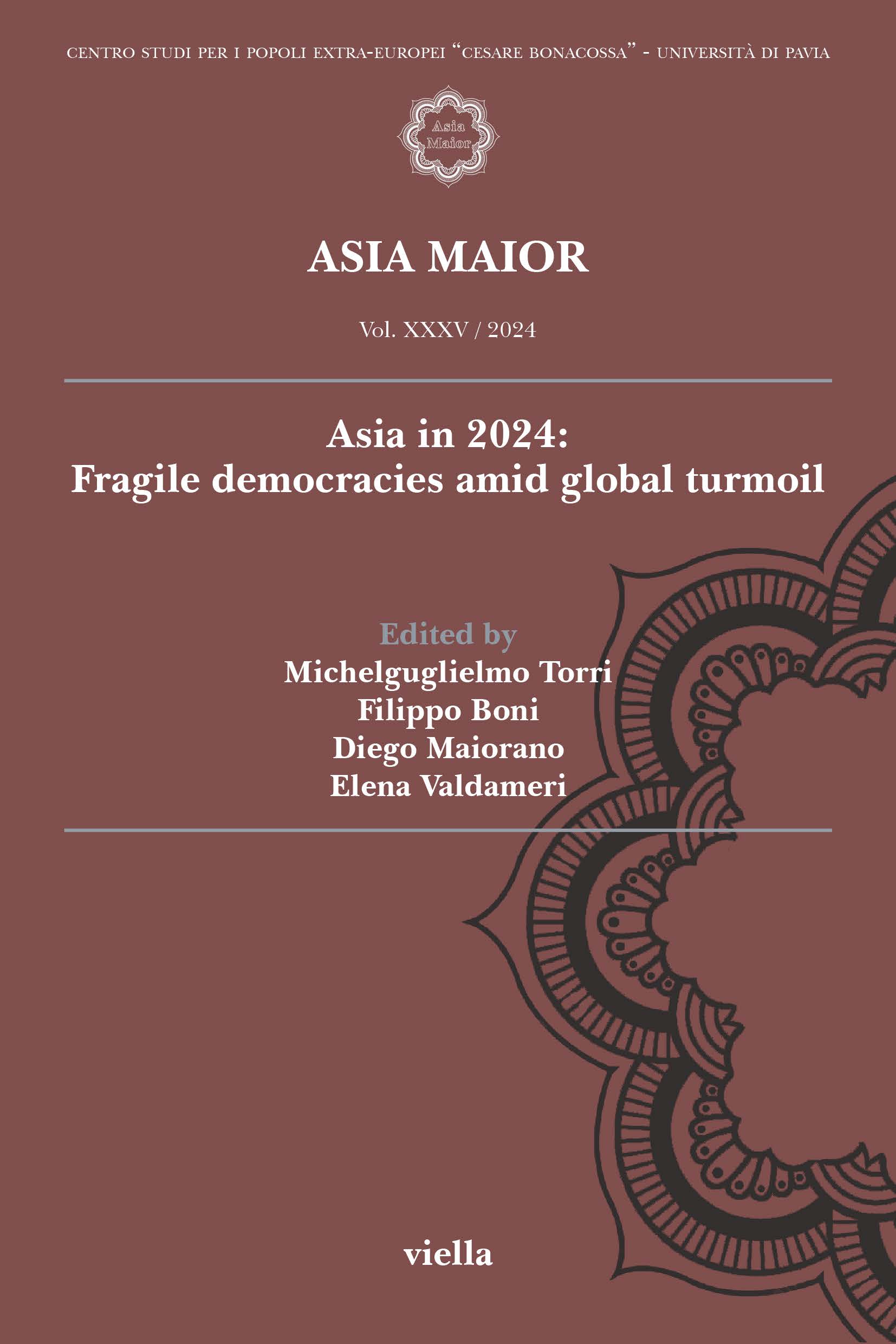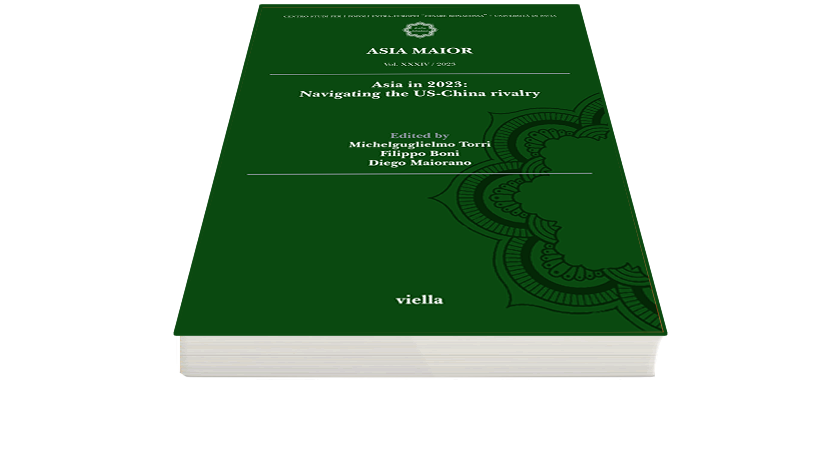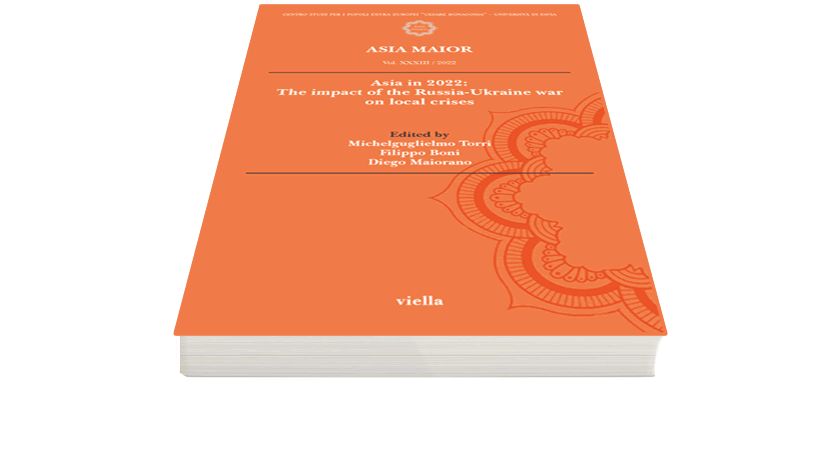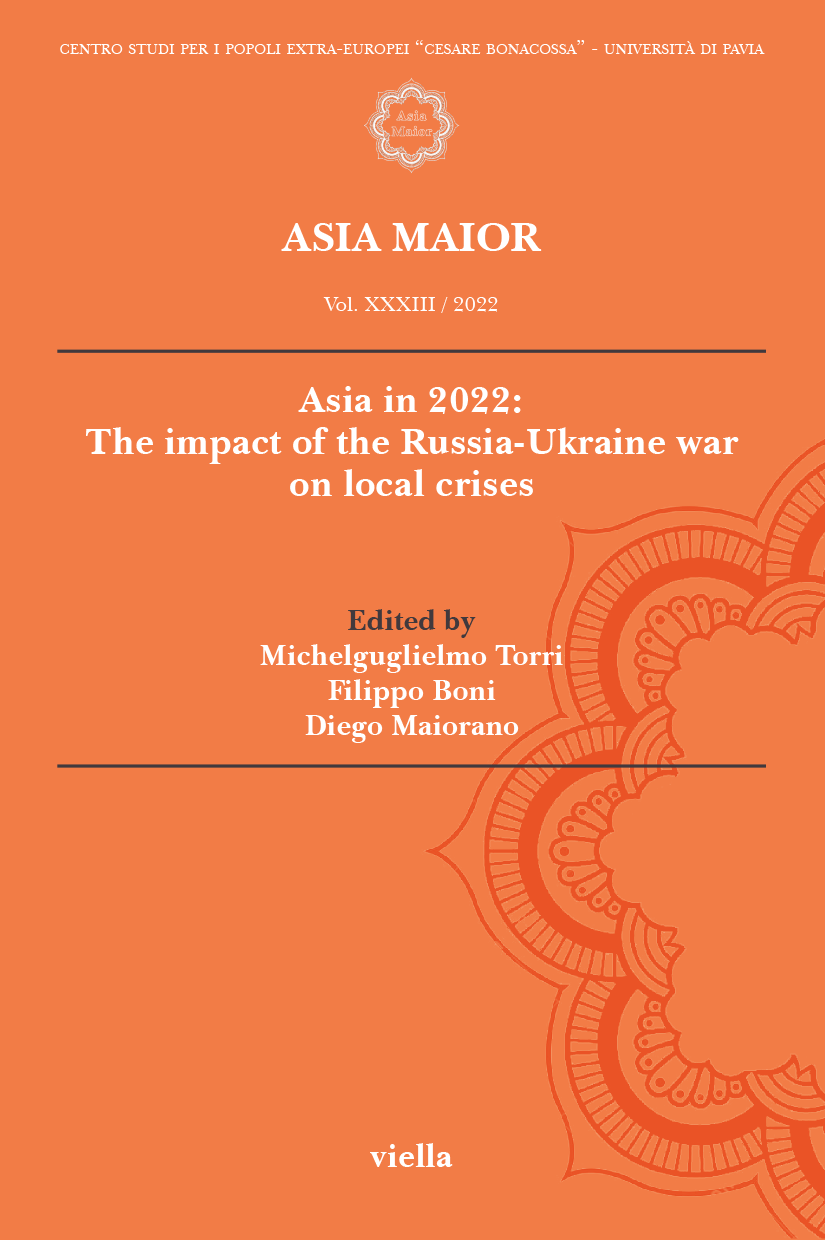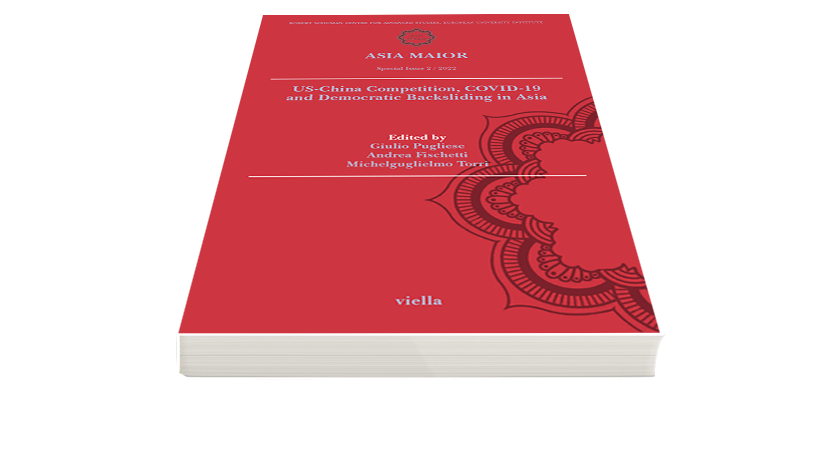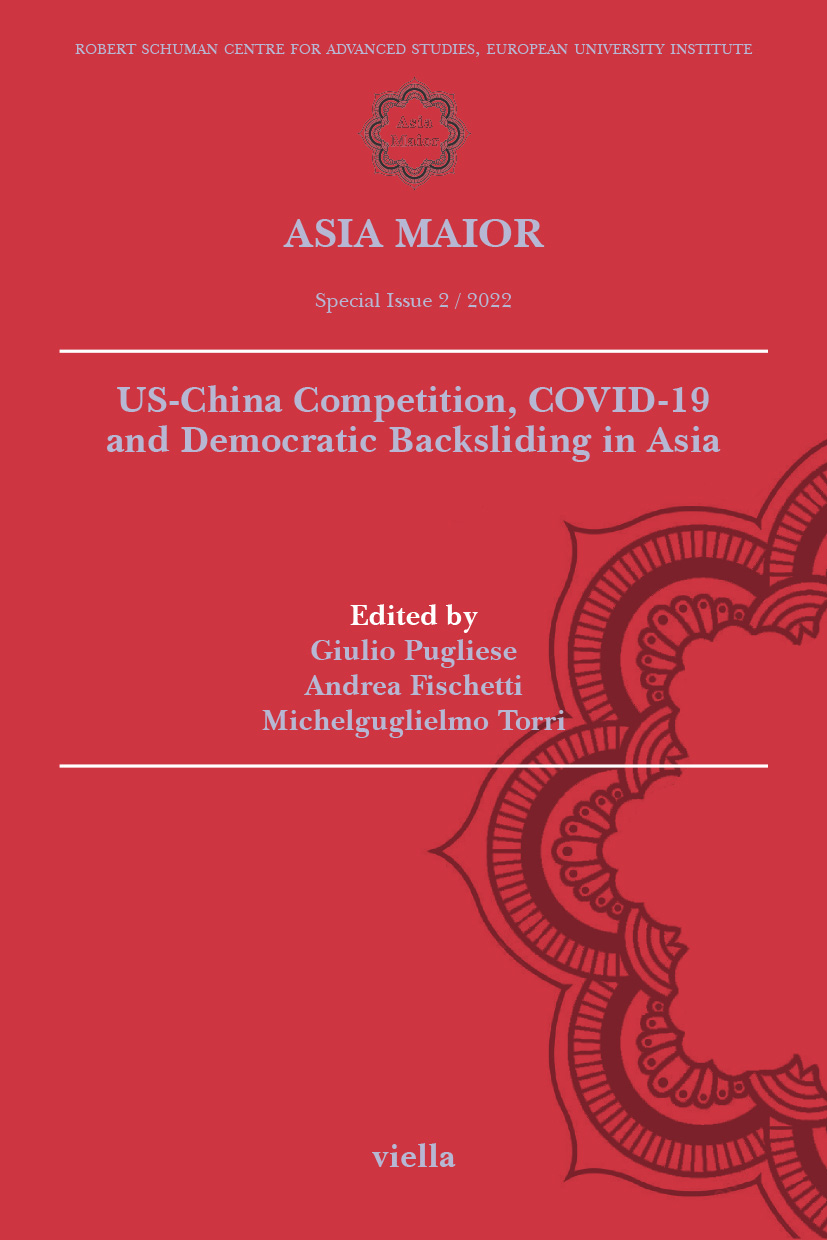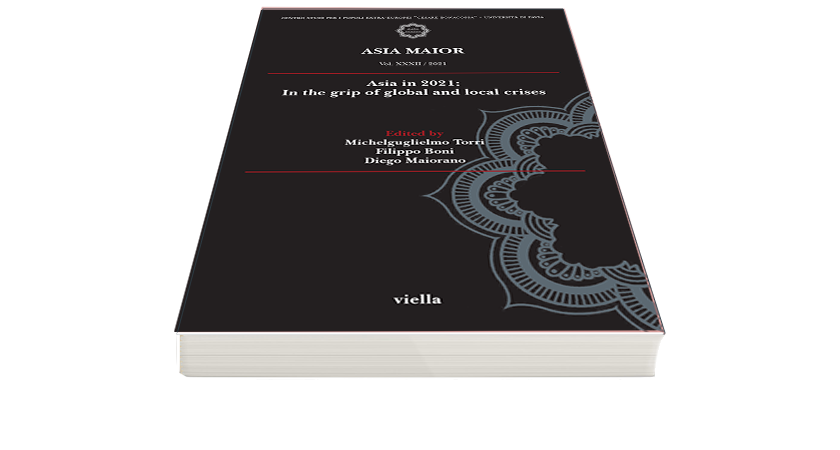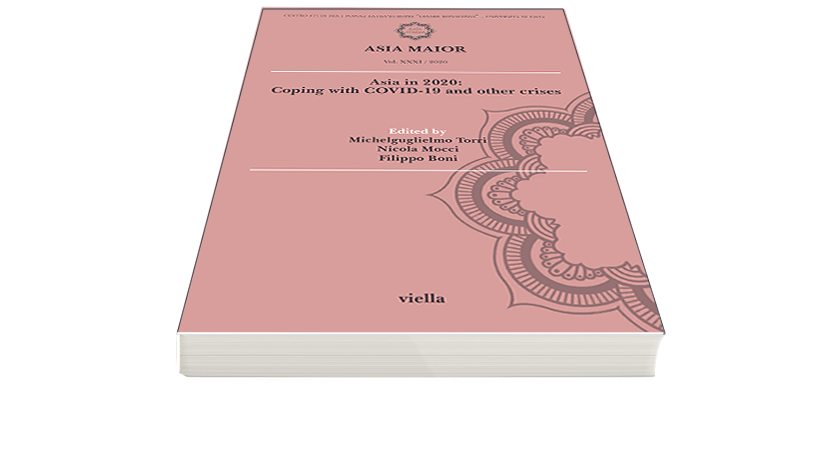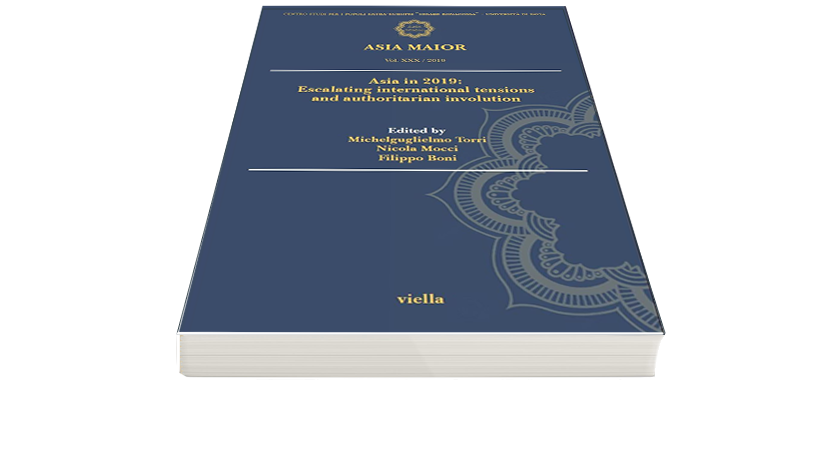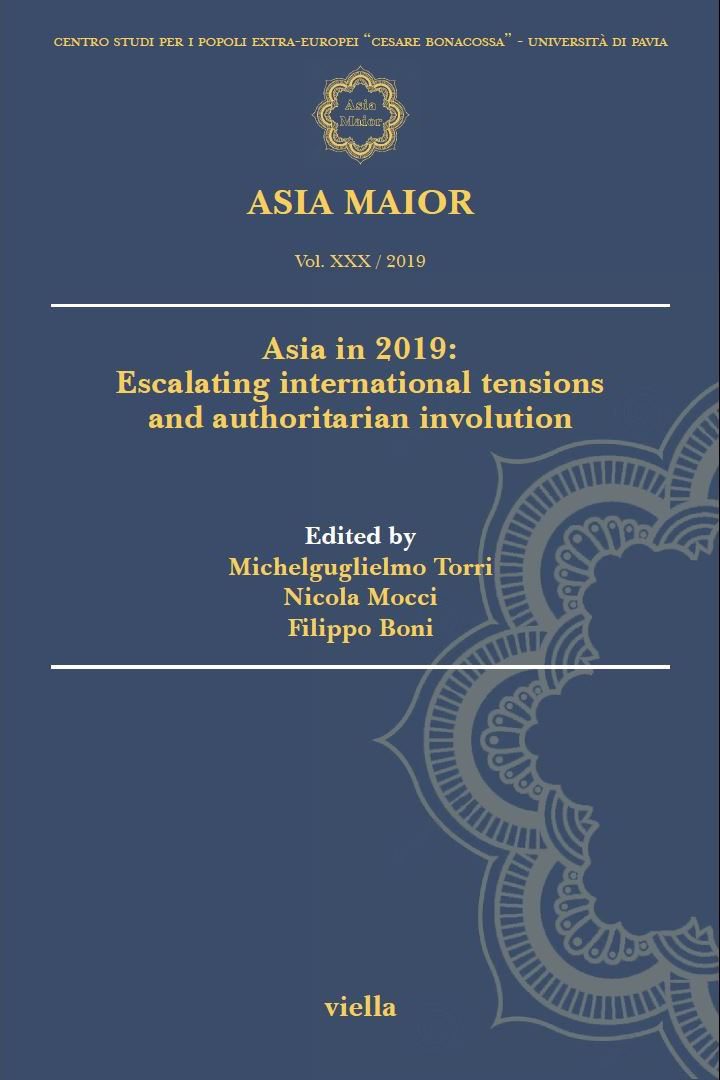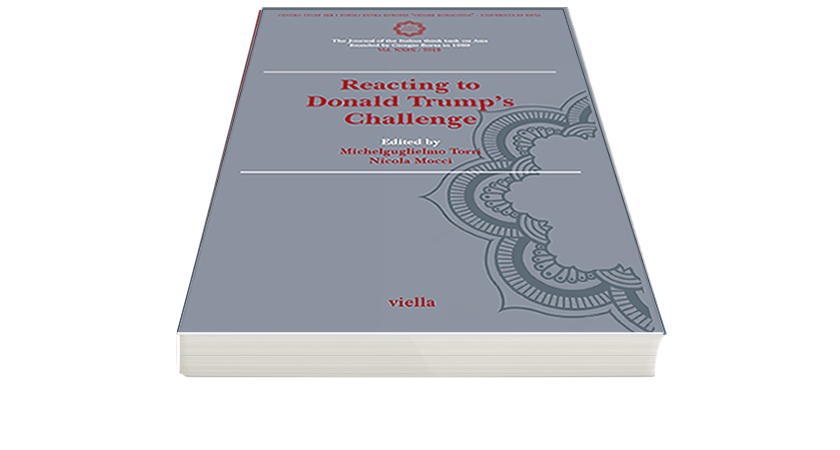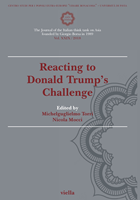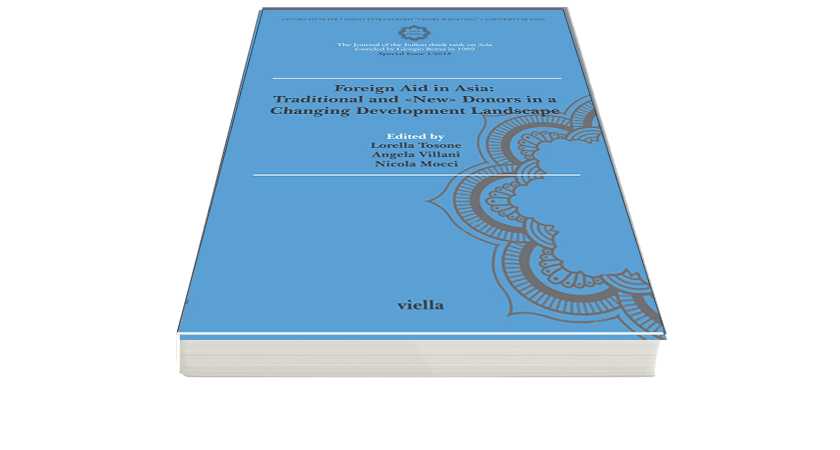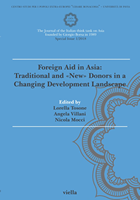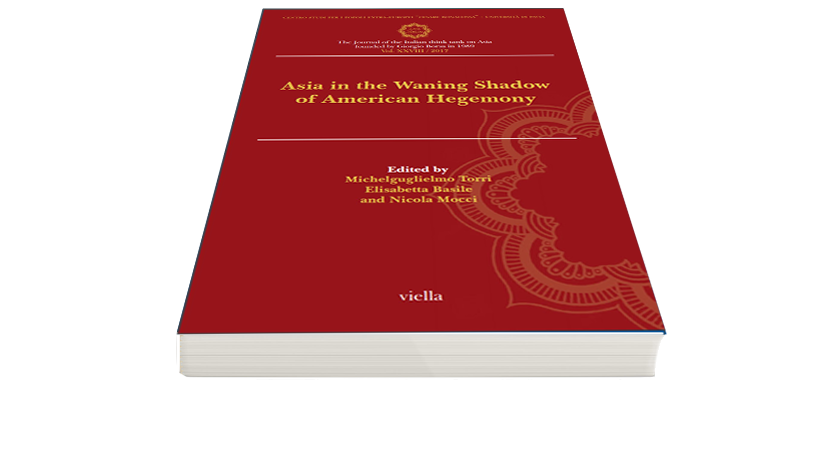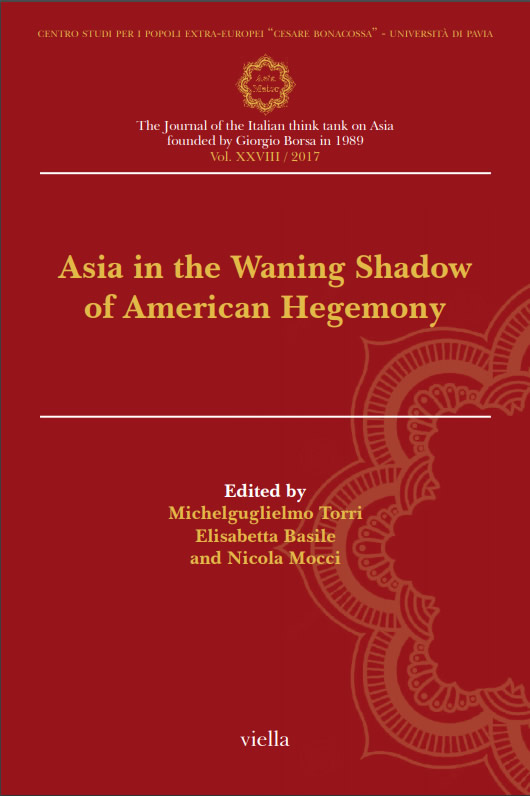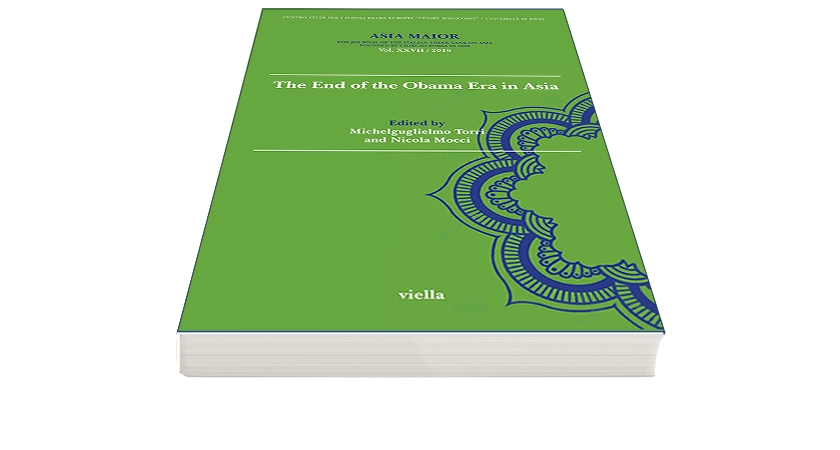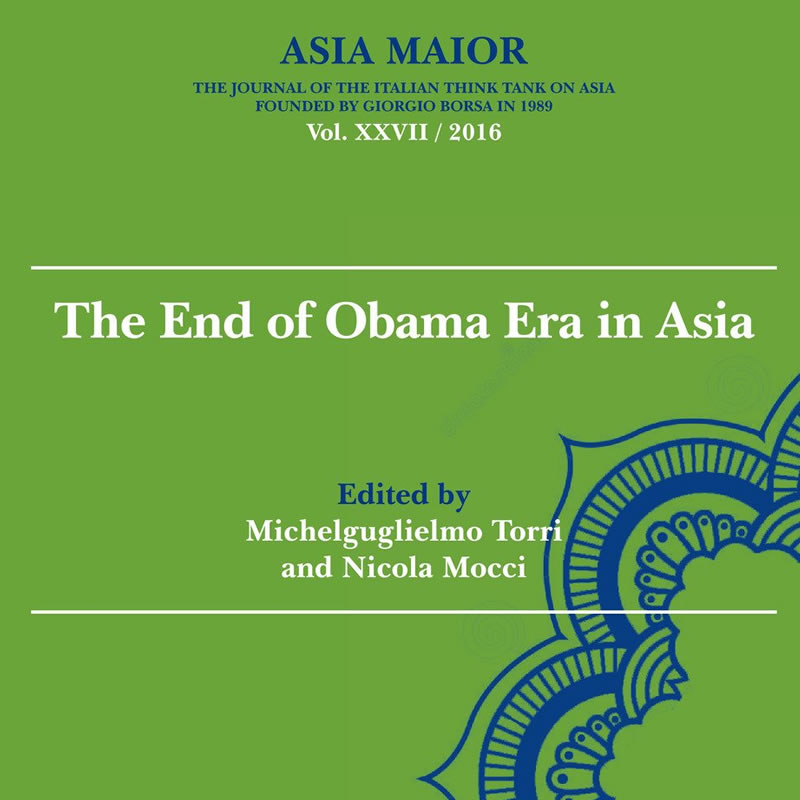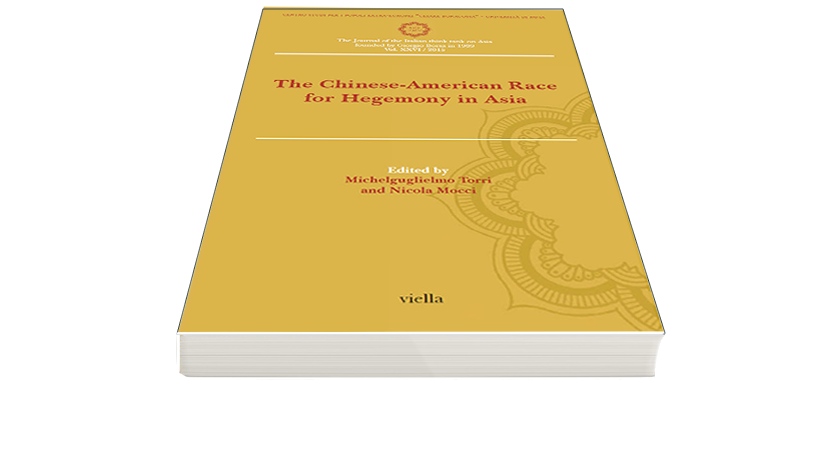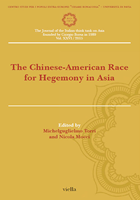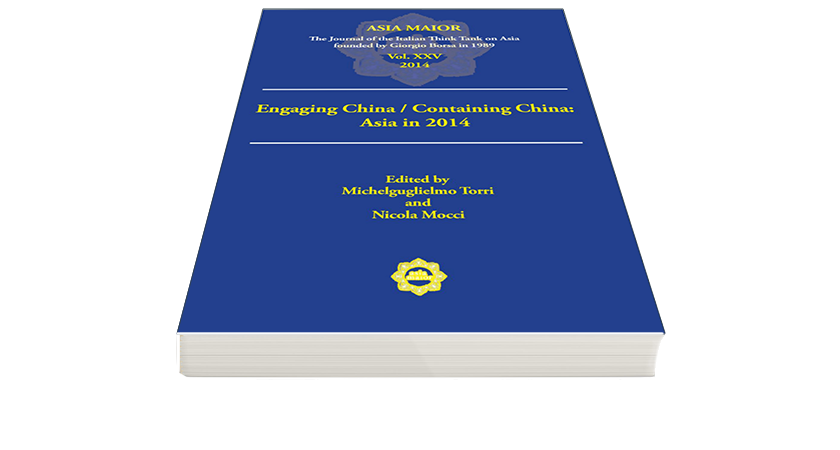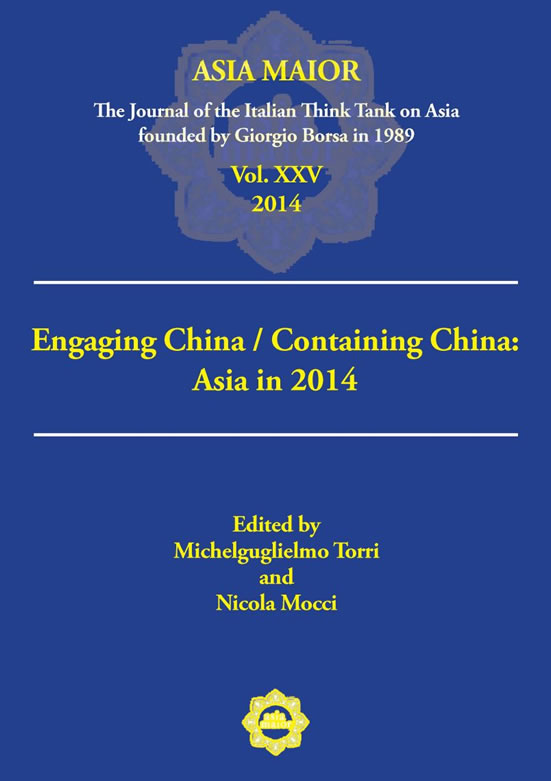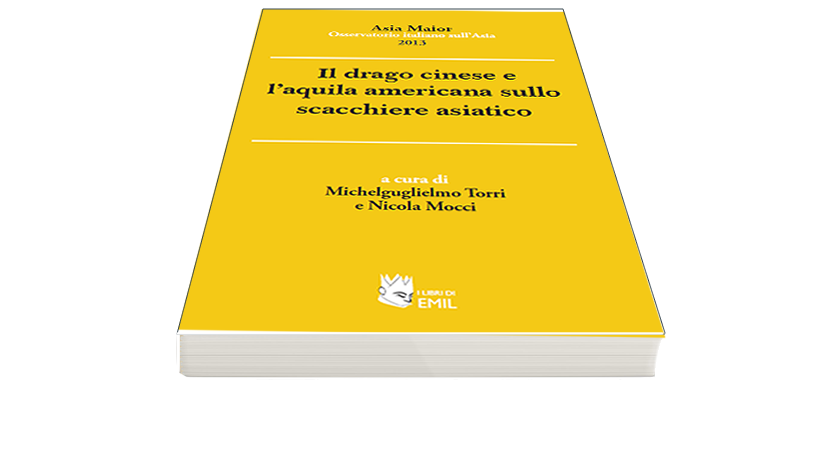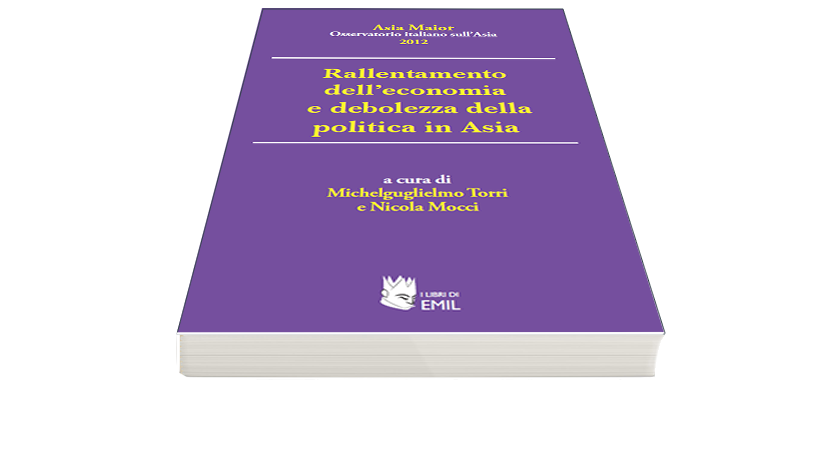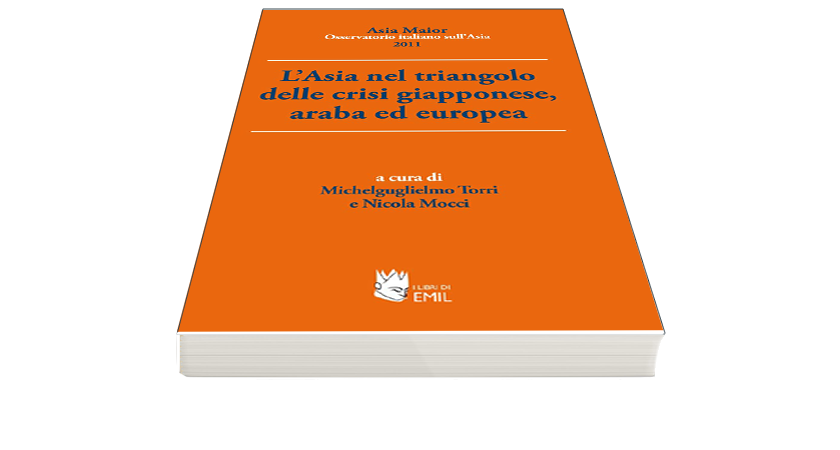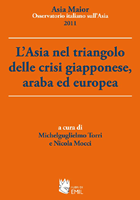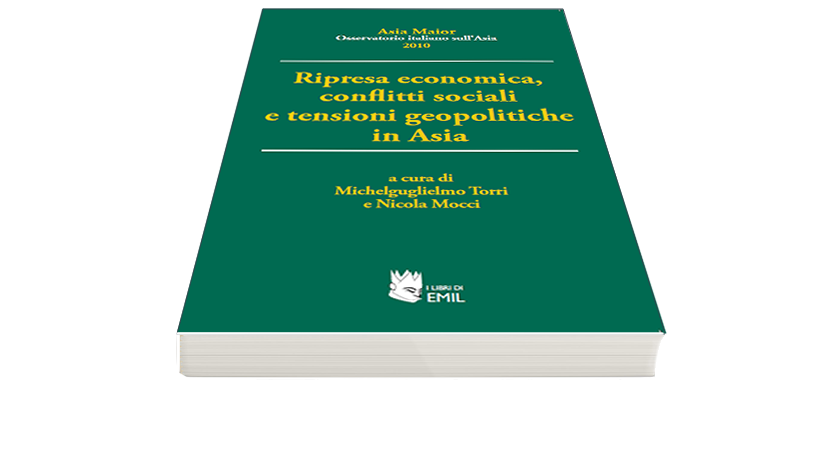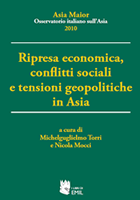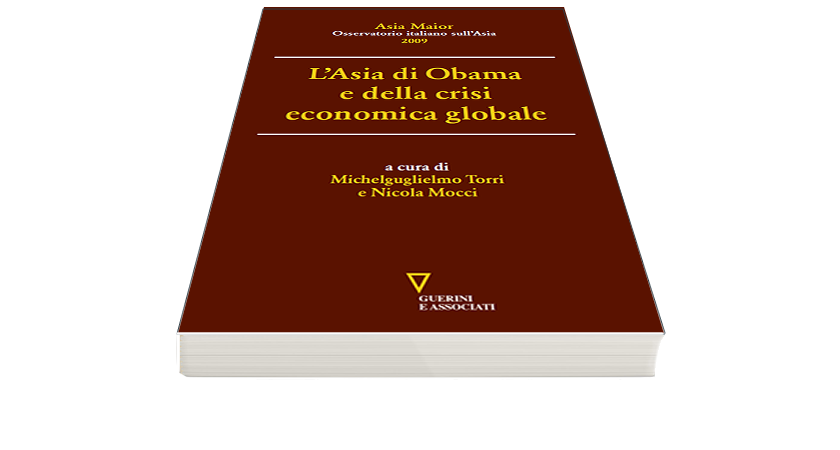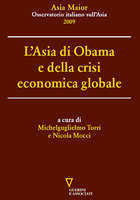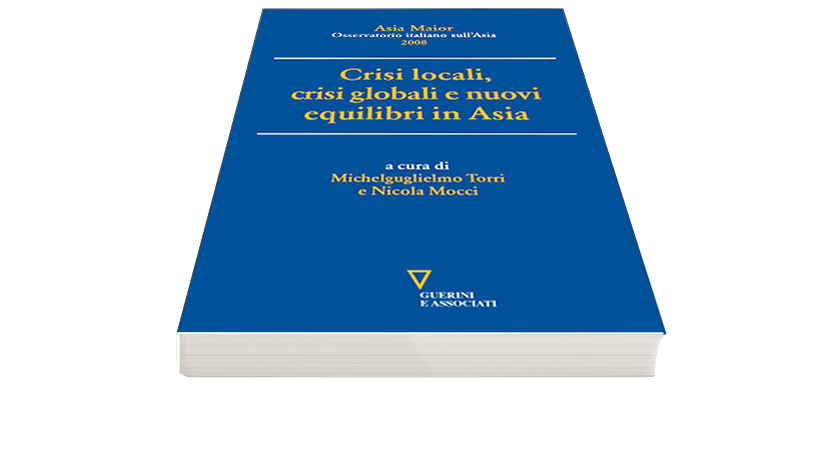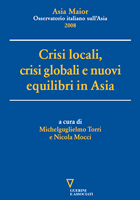Gaza and the Demographic Question
When and how the Gaza Strip started to be perceived by an increasing number of Israelis as a «demographic threat»? Which were the main plans to «thin» its population? To address these questions, the first part provides a brief historical background, lingering on pre-1948 Gaza, its inhabitants and the conflictual claims regarding its agriculture. The second part brings in the origins of Gaza’s demographic (un)balance post-1948, and the plans to expel a large part, if not most, of the local inhabitants. The final section discusses whether or not Zionism has always aimed at «diluting» the number of the inhabitants of Gaza and, more in general, in historic Palestine.
Keywords – Israel; Palestine; Demography; Gaza Strip; Hamas; Zionism.
1. Introduction
An official report drafted by the Israeli Ministry of Intelligence endorsed a plan for the forced and permanent relocation «of the civilian population from Gaza to Sinai».1 It was leaked to the Israeli press on October 12, 2023. In the months that followed, – in the context of the debates which ensued after the attack carried out by Hamas on 7 October 2023 and the obliteration of Gaza by the Israeli army2 – a number of Israeli journalists, diplomats and political leaders have suggested similar solutions.3 The latter came often together with proposals in favour of the establishment of Israeli settlements in the Gaza Strip, almost 20 years after the unilateral withdrawal of all Israeli forces and settlers promoted by the then Prime Minister Ariel Sharon.4
This article, largely based on primary sources, aims at providing academic depth to the debates around these issues. A particular attention is devoted to the dynamics through which the Gaza Strip started to be perceived – in the eyes of a growing number of Israelis – as a «demographic threat», as well as on the main plans aimed at «diluting the [local Palestinian] population» [Aderet 2024, 5 December]. The first part provides the historical background, and sheds light on Gaza, its inhabitants and the conflicting claims regarding the local agricultural sector in the period before 1948. The second section discusses the origins of Gaza’s demographic imbalance in the post-1948 phase as well as plans to expel a large part, if not the majority, of the local inhabitants. The third part focuses on the Zionist movement, with the aim of assessing whether or not the latter aimed at «thinning out» the population in Gaza and, more in general, in historic Palestine. The conclusions turn the attention on the role of the «vanquished» in relation to the benefits of historical knowledge.
2. The creation of a «Strip» of Gaza
Gaza is cited in the inscriptions of the Egyptian pharaoh Thutmose III (1481–1425 BCE).5 When the Tangerine explorer Ibn Battuta (1304-1368 CE) visited Gaza some 2700 years later, he noted that «it is a place of large dimensions […] it has no wall around it [lā sūr ʿalayhā]» [Ibn Battuta 1958, p.73].
The creation of a «Gaza Strip» is far more recent and the result of the tragic events of the last 77 years [Halevy 2016; Abu Salim 2016]; in fact, it has no precedent in the decades, centuries, or millennia prior, when Gaza was, among other things, part of a strategic intersection known as «the way of the Philistines», which connected the land of Canaan with ancient Egypt.
The tragic history mentioned above might be summarized in one data: about 70% of those living in the Gaza Strip, which is a 360 square kilometer area, are refugees who were driven out of Majdal, Huj, Simsim, Najd, Abu Sitta, and dozens of other villages. On the ashes of a number of them were later built Sderot (whose population doubled in the 1990s with the influx of immigrants from Russia), Or HaNer and several other Israeli cities and villages (in addition to Ashkelon, Ashdod, and some areas of the Western Negev, where Nirim6 and other villages were founded, Gaza was one of the 16 districts that made up the British-controlled Mandatory Palestine).
Palestinians call these expulsions and the destruction of 418 of their villages al-Nakba («the catastrophe»). It must be clarified that, for the Palestinians, the Nakba represents a process and not a phenomenon linked to a single event or year. Just to limit ourselves to three examples, in February-March 1949, following the signing of the armistice between Egypt and Israel, the Israeli forces expelled over 3,000 Palestinians from their homes in the villages of Iraq’s al-Manshiyya and al-Faluja. On 27 June of the same year, approximately 1,500 Palestinian refugees living in Baqa al Gharbiya were removed. On 14 January1950, 2,600 Palestinians were expelled from their homes in al-Majdal (Ashkelon).
|
Airborne leaflet dropped over the village of al-Tira in July 1948. It was addressed «To the Arabs of Al-Tira», suggesting them to surrender «to prevent a Nakba». |
|
|
|
Source: al-Ghubārī 2012. The scan of the leaflet is available on-line at: https://www.kedem-auctions.com/en/arabs-al-tira-–-airborne-leaflet-arabic-–-israeli-war-independence-1948-–-if-you-want-prevent-nakba |
It should also be noted that the Palestinians were not the first to use the expression al-Nakba. While the expression itself was already existing in Arabic, it was first utilized in reference to Palestine in leaflets that the Israeli armed forces dropped on al-Tira (near Haifa) in July 1948, with the aim of convincing Palestinians to abandon their homes and communities and surrender [Kamel 2022a]. At that point in history, Gaza emerged as the primary location for Palestinian refugees, transforming itself from Qadāʾ to Qitāʿ (from an Ottoman «administrative district» to a «strip» of land) [Al-Nimal 1979]. In Ursula Lindsey and Toufic Haddad’s words:
Gaza City was a major city in Palestine prior to 1948. It is also one of the few Palestinian cities that survived the 1948 Nakba, given that most Palestinian were lost in the creation of the state of Israel-West Jerusalem, Jaffa, Haifa, etc. Gaza City became a city that was teeming with all these refugees who were displaced from their lands, and subsequently it became the seat of the first attempt to try and form an all-Palestinian national government [Hukūmat ‘Umūm Filastīn] after 1948 [Haddad and Lindsey 2024, 13 June].
It is worth mentioning that the Palestinians are not simply «Arabs», a term through which they are often described in Israel and in Western countries: the thesis according to which, as «Arabs», they can easily be relocated to any other «Arab country» is highly problematic from an historical perspective, beside being in clear violation of international law. To refer to the local populations from the Strait of Hormuz to the Strait of Gibraltar as «the Arabs» is akin to calling those living in Canada, Australia, New Zealand, South Africa, the United States, Ireland, and Britain «the English»: they all speak the same language but exhibit distinctly different historical traditions, heritages and identities [MacKintosh-Smith 2019].
More than a millennium ago, Jerusalemite geographer Muhammad ibn Ahmad Shams al-Dīn Al-Maqdisī (946-1000) made it clear that he identified himself as a Palestinian: «I mentioned to them [workers in Shiraz] about the construction in Palestine and I discussed with them these matters. The master stonecutter asked me: Are you Egyptian? I replied: No, I am Palestinian» [Al-Maqdisī 2003, p.362].7 About 1.000 years later, on 3 September 1921, an op-ed published on Falastīn (which was printed from 1911 until 1948) highlighted that «We are Palestinians first and Arabs second» [MDC 1921, 3 December], thus echoing what was expressed a few years earlier by several Palestinian intellectuals such as Khalīl Baydas (1874–1949) and Salīm Qub’ayn (1870–1951).
In the 1870s the terms «Palestinians» and «Palästinenser» were also used, in explicit reference to the Arabs of Palestine, by a number of Western observers, including the British consul in Jerusalem James Finn (1806-72) [Finn 1878, p.248] and the German Protestant missionary Ludwig Schneller (1858-1953) [Schneller 1905, p.107]. These few examples, among others (the word Filastīnī, «Palestinian», was increasingly used in books and publications in the early 20th century), are there to remind us that, although all identities are ultimately «constructed», there are contexts in which the available sources confirm peculiar backgrounds that are too often omitted or unacknowledged [Kamel 2025].
«Who are they?», asked the Palestinian poet Mahmūd Darwīsh (1941-2008) in his Une rime pour les Mu‘allaqāt about the local populations under Ottoman rule: «That’s someone else problem» [Darwīsh 2000]. In many ways it was indeed a problem of the «others», of people external to the region. For the «locals», that is the «insiders», what made the difference was, on top of religion, the origin from a certain village (which often represented a sort of «protonation in the protonation»), the belonging to a certain hamūla (family clan), a way of dressing, a product of the earth, the use of a specific dialect, a particular dance (like the dabkeh, which in Palestine had its own peculiar characteristics), a festival [Kamel 2016, p.14].
A peculiar aspect of Palestinian culture and a glaring example of «protonational cohesion» was the annual Nabī Mūsā festival, which drew thousands of people from all across Palestine to the Jericho area [Al-‘Asalī 1990]. The purpose of the festival was to honor the traumatic events associated with the Crusades. Another example, among several others, was the festival known as «The Valley of the Ants». It took place once per year in the area around al-Majdal (Ashkelon). In the words of the Palestinian historian ‘Arif al-‘Arif (1891-1973), on that special occasion, many of the people who lived in Gaza, al-Majdal, and the nearby villages used to dressing up, bringing food, singing songs until the sun sets, waving flags, and riding horses [Al-‘Arif 1943].
3. How it was
In 1859 the American Protestant missionary William M. Thomson (1806-94) noted that: «the first time I came into this region I was agreeably surprised to find it not flat, barren country […] The country is equally lovely and no less fertile than the very best of the Mississippi Valley» [Thomson 1859, p.347]. One decade later, the British consul in Jerusalem James Finn (from 1846 to 1863) made it clear that he did «not know where in all the Holy Land I have seen such excellent agriculture of grain, olive-trees, and orchards of fruits, as here at Ashdod [still in 1945, Ashdod was inhabited by 4620 Arabs and 290 Jews]. The fields would do credit to English farming» [Finn 1868, p.162].
In the 1870s, there were around 468 hectares of irrigated citrus groves in the Gaza area [Badran 1972, p.126]. In 1899, two decades later, John Dickson, the British Consul to Jerusalem (from 1890 to 1906), pointed out that the area of Gaza was «under cultivation, crops of wheat and barley being raised by the Arabs» [ISA 1899, 30 November].
In a Hebrew publication from 1918 titled Eretz Yisrael ba-‘avar u-ba-hove («The Land of Israel in the Past and Present»), David Ben-Gurion (1886-1973) and Yitzhak Ben-Zvi (1884-1963), who would later become, respectively, the prime minister and second president of Israel, strived to demonstrate the Jewish origins of the local fellahin [Ben-Gurion and Ben Zvi 1980, p.196]8 (in their opinion, the local population made no contribution in the previous twelve centuries) [Ben-Gurion and Ben Zvi 1980, p.151-5 and 210]. Ben Gurion and Ben Zvi went so far as to undermine the very basis of the thesis of the mass expulsion of Jews – a narrative which have been rejected by many leading scholars of Jewish history [Yuval 2006, p.19; Bartal 2008, 6 July; Aldeman and Barkan 2011, p. 159]9 – which allegedly took place after the destruction of the Second Temple (70 CE):
To claim that following the conquest of Jerusalem by Tito and the failure of the revolt of Bar Kokba the Jewish people ceased to work the soil of Palestine means to show one’s complete ignorance of Jewish history and literature of the time […] Despite the oppression and suffering, the people of the country remained that which it always was [Ben Gurion and Ben Zvi 1980, p.198].
This final quotation clearly contradicts the language of the Declaration of Independence that Ben-Gurion himself read on 14 May 1948, under a portrait of Theodor Herzl (1860-1904) at the Tel Aviv Museum. «After being forcibly exiled from their land», to quote the precise words contained in the Decalaration, «people kept their faith during the diaspora» [Kamel 2015, ch. 2].
The reason for the existence of two theses in such strong contrast on a crucial topic such as the galut (the «diaspora») can be found in the events that occurred in the three decades between the publication of Ben-Gurion/Ben Zvi’s book and the birth of State of Israel. The rising of Palestinian nationalism, the Hebron massacre (1929) and the Great Arab Revolt (1936) had indeed shown, once and for all, the firm opposition of the local majority to any process of assimilation [Kamel 2015, ch. 2]. Such an awareness would soon create the conditions for the development of a new myth, that of the midbar shemama10 («the barren desert»). The hint is to the attempts to present Palestine as a desolate place,11 with a tiny, recently arrived Arab population. The region’s subsequent development has been significantly impacted by this perception:
From that moment on, [i.e., since the abandonment of the thesis of the Jewish origin of the fellahin] the descendents of the Judean peasantry vanished from Jewish national consciousness and were cast into oblivion. Very soon […] the modern Palestinian fellahin became, in the eyes of the authorized agents of memory, Arab immigrants who came in the nineteenth century to an almost empty country and continued to arrive in the twentieth century as the developing Zionist economy, according to the new myth, attracted many thousands of non-Jewish laborers [Sand 2008, p. 417].
In the historical phases prior to when the Crusaders destroyed a large part of the Gaza area in the 12th century, the latter was home to a limited yet thriving and well integrated Jewish community (in the context of the «Arab conquest» of the 7th century, the Arab conquerors did not expel the Jews and Christians who lived in the area).12
A limited presence also persisted in the following centuries, and until the revolts of 1929, when the Jewish neighborhood of Gaza was destroyed by local Palestinians and all the Jews who were living in Gaza at the time (51 people) fled the city. It the space of just two decades, the 1920s and 1930s, a far greater number of cases of intercommunal violence were recorded than in the previous four centuries combined. Although the ethnic-religious equilibria in the Gaza Strip were significantly influenced by the dynamics linked to the rising of Zionism and the First World War – when Gaza suffered also attacks with chemical weapons13 – and other related historical trajectories [Rafeq 1980], it is only as a consequence of the 1948 war that the entire area recorded, from a demographic point of view, an unprecedented shift.
4. Gaza’s demographic unbalance
Following Operation Yoav, carried out by the Israeli forces in the Negev (Naqab) Desert in mid-October 1948, the number of refugees in the Gaza Strip rose from 100,000 (which arrived in the previous months) to 230,000. Michael Gallant, father of Yoav Gallant (several times minister in the years 2018-2024), named his son Yoav to commemorate the military campaign that, more than any other, altered Gaza’s demographic equilibrium.
In our days, Yoav Gallant and, more in general, some other key political figures and institutions in Israel, are attempting to close the circle of history, this time by reducing the population in Gaza. This objective is scarcely unprecedented. To stick to the period right after 1948,14 and more precisely to 5 years later (1953), the «Free Officers Movement» which overthrew Egyptian King Farouk in 1952, together with the United Nations Relief and Work Agency (UNRWA), and the US (under President Harry Truman) agreed to relocate 12,000 Palestinian families from the Gaza Strip to the Sinai Peninsula [Kamel 2024b, 28 October].
Egyptian newspapers first published details on the plan in May 1953. To facilitate its implementation, an Israeli military unit led by Ariel Sharon attacked al Bureij Camp in August 1953, killing about 30 Palestinians. Back then, Egypt was experiencing major internal problems, and Nasser, one of the «Free Officers», who served as prime minister (1954-56) and then president (1956-70) of Egypt, had little interest in taking any responsibility for managing the problem of Gaza’s large refugee population, beside also being aware that his country was not ready to confront Israel militarly.
It is indeed only after Israel’s «Black Arrow» operation in February 1955 – which targeted the Egyptian forces in response to their active role in providing various forms of support for Palestinian fedayeen activity – that Nasser’s approach became more confrontational with Israel and supportive of the Palestinians. A cable sent from Israel to Moshe Sharrett (at the time in Bombay) on 4 November 1956, decried: «The dangers inherent in the expansionist and imperialistic policies of the Nasser regime, whose declared aim is Egyptian hegemony both in African and Western Asia».15
The «Sinai plan» for the expulsion of 12,000 Palestinian families was foiled after two years of massive protests throughout the Gaza strip, when Palestinians – which, according to the Israeli Foreign Ministry’s liason officer with the army Arieh Eilan, were experiencing «real hunger» [ISA 1955, 27 March] – chanted slogans such as: «No settlement. No relocation. Oh, you American agents» [Bisīsū 1980, p.31]. These protests played a seminal role in twarting a goal that was discussed and cherished already during the war of 1948. In Elisha Efrat’s words:
Yigal Allon, a military commander during the War of Independence, used to say that, if he and his men had had another day or two, they would have captured Gaza in 1948. He supposed that, if Israel had captured the Gaza Strip then, there would not have been so many refugees living there, and they would have fled. That was also what David Ben-Gurion thought when he proposed capturing the Gaza Strip in 1955 [Efrat 2006, p.183].
One year later, in October 1956, the Israeli army invaded the Sinai and Gaza,16 maintaining the direct control of both areas for four months, before being forced to evaquate them due to mounting international (including from the US) pressure [Masalha 1996, p.55-68]. Back then, the new Israel’s foreign minister, Golda Meir (1898-1978), argued that «the Gaza Strip is an integral part of the land of Israel»,17 while Menahem Begin (1913-1992), the head of the Herut party at the time, maintained that Gaza «belonged to Israel by right» [Begin 1956, 28 November].
During those same months, Levi Eshkol (1895-1969), Israel’s finance minister, set aside half a million dollars to drive thousands of Palestinians to the Sinai. Ezra Danin (1903-1984) was given responsibility for this plan, known as the «Al-‘Arīsh option»,18 which was gaining popularity at the time. Incidentally, Danin was the same person who in 1962 sponsored «Operation workers», which sought to relocate Palestinians to West Germany [Sharett and Rivlin 1987]. It might be useful to add that in the very same historical phase in which Levi Eshkol was advocating for the emigration of the Gazawis in exchange for economic benefits, Avraham Tamir (1924-2010), on request of Ben-Gurion, outlined a plan – known as Hafarperet («The Mole») – for the expulsion of 40,000 Palestinians from Israel to Jordan.19
After 1967, also thanks to the influential role played by Ada Sereni (Mossad’s chief operative in Italy), Yosef Yariv (the head of the Mossad’s special operations arm) and others, the Israeli forces intensified their attempts to forcibly relocate Gaza’s refugees to Jordan and South American states. To encourage this goal, which was firmly opposed by the Egyptian and Jordanian authorities, they set up «emigration offices» throughout the Gaza Strip and offered financial incentives. In the 1970s, Israel’s transfer policies continued to intensify – 38,000 refugees were moved to the West Bank and Sinai in 1971 alone) – and prominent figures such as Yitzhak Rabin (1922-1995) strived to reach an agreement with King Hussein bin Talāl (1935-99) to implement the expulsion of thounsands of Palestinians from Gaza to Jordan [Shragai 2025, 15 February].
In the following years and decades, the plan for the relocation of Palestinians from Gaza (mainly) to the Sinai Peninsula, while being offered less assiduously, remained rather popular. A number of Israeli right-wing figures and parties (such as Moledet, established by Rehavam Ze’evi in 1988) have continued to openly advocate for the expulsion of the Palestinians through population transfer. Just to provide a particularly meaningful example, the 2004 «Eiland plan» envisioned that Egypt would cede land roughly five times the size of Gaza to settle there the majority of the Gazawis. The plan was named after Giora Eiland, who served as the head of the Israeli National Security Council between 2004 and 2006.
The 2004 Eiland plan was never implemented, and in 2005, just before a stroke left him permanently incapacitated, Ariel Sharon drove 7,000 settlers out of Gaza while also resettling tens of thousands more in settlements throughout the West Bank [Kamel 2024b, 28 October]. As noted by Justin Alexander:
Gaza’s very existence, with its dense, impoverished and growing population, the majority of whom are refugees from what is now Israel, is perceived by some Israelis to pose a demographic threat to the maintenance of a Jewish-majority state next-door, indeed this was a major motivation for the Disengagement [decided by Sharon] [Alexander 2007, p.6].
The unilateral disengagement from Gaza was in violation of the Oslo Accords, and, not by chance, exacerbated and prolonged hostility and violence rather than tackling them.
5. Demography and Zionism(s)
«Diluting» the Palestinian population was a political goal already before 1948? To answer to this question, it might be useful to start from a specific date, that is 12 June 1895, when the founder of political Zionism, Theodor Herzl (1860-1904), wrote that «we shall try to spirit the penniless population across the border» [Herzl 1960, p.88-90]. Benny Morris [2004, p.40-41], Edward Said [1992, p.13], and numerous other academics have misquoted (cutting some key sentences) this passage to support the claim that Herzl was aiming at driving the Palestinians out of their land. Yet, Herzl did not have Palestine and its people in mind when he wrote those remarks. The geographical frame of the «expropriation» process to which he was alluding was South America: «I am assuming that we shall go to Argentina», Herzl wrote in that same diary on 13 June 1895 [Herzl 1960, p.134].
Herzl never used the terms «Arabs» or «Palestinians»,20 and presented Zionism as an «outpost of civilization as opposed to barbarism» [Herzl 2006, p.28]. However, there is no «proof» that he intended to drive out the local inhabitants. It is only from the 1930s onwards,21 – when the tensions between the three local communities (Palestinian Jews, Arab-Palestinians and Zionists) sharpened [Kamel 2015, ch. 4; Kamel 2021, 19 August], and after that the 1937 British Peel Commission proposed the simultaneous forced transfer of about 225,000 Palestinians and 1,250 Jews22 – that the subject began to attract increasing attention. It was only then that opinions such as the ones voiced in 1940 by the director of the Department for Land in the Keren Kayemeth LeIsrael (KKL), Yosef Weitz, emerged: «There is no other way», argued Weitz, «but to transfer the Arabs from here to neighbouring countries» [Weitz 1969, 29 September]. Weitz, later on (1949-54), outlined a plan for the expulsion of thousands of Galilee’s Christians to Argentina and Brasil [Masalha 1999].
The fact that the Zionist authorities did not aim at expelling them, at least until the 1930s, does not mean that Palestinians, as a general tendency, were treated fairly. For instance, Asher Ginsberg (1856-1927), one of the most influential Zionist thinkers of the time, arrived in Palestine in 1891 and, after spending a few months in the area, wrote an article entitled Emet me-Eretz Ysrael («Truth from the Land of Israel») in which he pointed out that «They [Ginsberg was referring to the new settlers who were arriving from Europe] deal with the Arabs with hostility and cruelty, trespass unjustly, beat them shamefully for no sufficient reason, and even boast about their actions. There is no one to stop the flood and put an end to this despicable and dangerous tendency» [Ginsberg 1981].23
The same year (1891), Moshe Smilansky (1874-1953), a well-known writer from Kiev, arrived in Palestine and, a few years later, recounting is experience, wrote that: «During the thirty years we have been here, it is not they [the Palestinians] who have remained alien to us but we to them» [Mendes-Flohr 1983, p.5]. Yitzhak Epstein (1862-1943), – a Russian writer who immigrated in Palestine in 1886 – spoke to the delegates of the 7th Zionist Congress in 1905, stressing that «in our beloved land lives a whole people which has lived there for many centuries and has never considered the idea of leaving it» [Epstein 1907, p.193-206]. In 1929, renowned historian Hans Kohn (1891–1971), who had been involved in the Zionist movement since 1909, wrote that «we pretended that the Arabs did not exist and were glad when we were not reminded of their existence» [JNUL 1929, 21 November].24
These few examples are there to remind us that the Zionist movement was anything but a monolith, and that many critical aspects concerning the relations with the Palestinian population were visible and relevant already at that time.
6. The past’s future
In late January 2025, on an Air Force One flight from Las Vegas to Miami, US President Donald Trump outlined a plan to «clean up» Gaza. «We are talking about probably a million and a half people, and we just clean out that whole thing», Trump told reporters, adding that the move «could be temporary» or «could be long-term» [Cuddy and Donnison 2025, 26 January].25 Jordan’s King Abdullah II and Egypt’s President al-Sisi – two dictators who heavily depend on US funding – have been asked, so far to no avail, to take in Palestinians from Gaza, despite the fact that this represents a clear violation of international law, which prohibits «individual or mass forcible transfers, as well as deportations of protected persons from occupied territory to the territory of the Occupying Power or to that of any other country» [IHL Database 1949, 12 August]. The Jordanian King, in particular, was aware that the moment he would accept to host thousands of Gazawis, the next (very likely) step would be – in line with far-right Israeli Finance Minister Bezalel Smotrich’s plans [Khalil and Shamala 2025, 10 February] – the request to host hundreds of thousands of Palestinians expelled by the Israeli army from the West Bank to Jordan.
A few days after proposing his plan for the mass expulsion of the Gazawis, while speaking at a White House news conference, Trump pointed out that Palestinians living in the Gaza Strip should be relocated, and added that they would be «thrilled» to live elsewhere and were only staying because they had «no alternative» [Gregorian 2025, 4 February]. Right after this, Israeli Defense Minister Israel Katz announced the establishment of a new directorate in the Defense Ministry to facilitate the «voluntary emigration» of the Gazawis.
Yet, in light of the epochal catastrophe still raging in Gaza (and, to a more limited but very visible extent, in the West Bank), Palestinians’ resistance to expulsions and relocations is today more tenacious than ever. Palestinians are aware that – as in the past – there is nothing «temporary» in their forced removals from their homes. They know that for them there is not, nor will there be, any «right of return».
It is therefore hardly surprising that Palestinians are willing to pay a high price to remain on their land. Equally eager are of course also the Israelis and this is a further reason why anyone caring about this land and its inhabitants must contribute to finding a solution that would allow these two people to coexist. How to do so? A comprehensive answer would require much more space,26 but, also in light of what has emerged in this article, an element appears evident. This is the necessity of knowing and recognizing the tremendous historical cost that the Palestinians have paid so that the aspirations of their counterpart could be realized, bending the arc of history towards an idea of justice and greater understanding, without this affecting the rights and aspirations of any of the involved parties. Reinhart Koselleck (1923-2006), the founder of Begriffsgeschichte (conceptual history), noticed that «History may be made, in the short term, by winners, but historical knowledge comes, in the long run, from the vanquished» [Koselleck 2000, p.68].
Bibliography
Abu Salim, Jehad, 2016, ‘From Fence to Fence: Gaza’s story in its own words’, in H. Tawil-Souri, D. Matar (ed.), Gaza as metaphor, London: Hurst.
Al-Ghubārī, Omar, 2012, Dhakirat al-Tira, Haifa (al-Tira’s memory, Haifa). Tel Aviv: Zochrot.
Aldeman, Howard, and Elazar Barkan, 2011, No Return, Nor Refugee, New York: Columbia University Press.
Aderet, Ofer, 2021, 6 May, ‘Ben-Gurion’s Uncensored Diary Revealed: «Pester and Motivate the data to Move Eastward»’, Ha’aretz.
Aderet, Ofer, 2024, 5 December, ‘«We Give Them 48 Hours to Leave»: Israel’s Plans to Transfer Gazans Go Back 60 Years’, Ha’aretz.
Alexander, Justin, 2007, Conflict, economic closure and human security in Gaza, London: Oxford Research Group.
Al-Maqdisī, 2003, Ahsan al-taqāsīm fī maʿrifat al-aqālīm (The best division for regional knowledge), Beirut: Dar El-Māchreq.
Al-Mubarrad, 1956, Al-Kāmil (The Perfect One), Cairo: Dār Nahdat Misr, vol. 2.
Al-Nimal, H. Abu, 1979, Qitāʿ Ghazza: 1948-1967 (The Gaza Strip: 1948-1967), Beirut: Markaz al–Abhāth.
Al-‘Arif, Arif, 1943, Al-Mūgaz fī Taʾrīkh Asqalān (Compendium of the history of Ashkelon), Jerusalem: Matbaʻat Bayt al-Maqdis.
Al-‘Asalī, Kamil, 1990, al-Mawsim al-Nabī Mūsā fī Filastīn. Tārīkh al-Mawsim wal-Maqām (The festival of Nabī Mūsā in Palestine. The history of the festival and the sanctuary), Amman: Dār al-karmil.
Badran, N., 1972, March, ‘Al-Rif al-Filastini qabla al-Harb al-Alamiyya al-Ula’ (The Palestinian pre-World War I rural landscape), Shu’un Filastiniyya, n. 7.
Bargal, Yoram, 2004, ‘Dimuyei Nof Eretz Israel be-Ta’amulat ha-Keren ha-Kayemet le-Israel bi-Tekufat ha-Yishuv’ (Images of the landscape of the Land of Israel in the propaganda of the National Jewish Foundation during the period of Yishuv), Motar, n. 11.
Bartal, Israel, 2008, 6 July, Ha’aretz.
[BOA] Başbakanlık Osmanli Arşivi, Y.PRK.TōF 6/72, Istanbul.
Begin, Menahem, 1956, 28 November, Interview on New York Times.
Ben-Gurion, David, and Yitzhak Ben Zvi, 1980, Eretz Yisrael ba-‘Avar u-ba-Hove (Palestine in the past and present), Jerusalem: Ben Zvi Press.
Ben-Gvir, Itamar, 2024, 19 January, ‘Interview on Channel 13’, (https://www.instagram.com/reel/C2SFj2istUo/?utm_source=ig_embed).
Ben Zvi, Yitzhak, 1929, Uklusianu ba-aretz (Our population in the country), Warsaw: Keren Kayemeth LeIsrael.
Bigart, Homer, 1956, 11 November, ‘Gaza is claimed as part of Israel’, New York Times.
Bisīsū, Tawfiq, 1980, Descent into the water, Wilmette: Medina Press.
Borger, Julian, 2023, 9 December, ‘Civilians make up 61% of Gaza deaths from airstrikes’, The Guardian.
[CZA] Central Zionist Archives, A245/56/6.
Cuddy, Alice, and Jon Donnison, 2025, 26 January, ‘Trump wants neighbours to take in Palestinians to “clean out” Gaza’, BBC News.
Darwīsh, Mahmūd, 2000, La terre nous est étroite et autres poèmes, 1966-1999, Paris: Gallimard.
Efrat, Elisha, 2006, The West Bank and Gaza Strip, Abingdon: Routledge.
Eiland, Giora, 2023, 19 Noveber, ‘Lo lehiratea me ha-olam’ (Let’s not be intimidated by the world), Yedioth Ahronoth.
Epstein, Yitzhak, 1907, ‘A Hidden Question’, Ha-Shilo’ah, n. 17.
Finn, James, 1868, Byeways in Palestine, London: Nisbet.
Finn, James, 1878, Stirring Times, or Records from Jerusalem Consular Chrinocles of 1853 to 1856, v. I, London: C. Kegan Paul.
Ginsberg, Asher, 1891, ‘Emet me-Eretz Yisrael’ (Truth from Eretz Israel), Ha-Meliz, (https://www.jewishvirtuallibrary.org/ahad-ha-rsquo-am).
Ginsberg, Asher, 1927, Kol Kitvei Ahad Ha’am (The collected writings of Ahad Ha’am), Tel Aviv: Dvir.
Government of Israel, Intelligence Ministry, Policy Department, 2023, 13 October, ‘Policy paper: Options for a policy regarding Gaza’s civilian population’ (https://it.scribd.com/document/681086738/Israeli-Intelligence-Ministry-Policy-Paper-on-Gaza-s-Civilian-Population-October-2023).
Gregorian, Dareh, 2025, 4 February, ‘Trump proposes U.S. control of Gaza in move that would permanently displace Palestinians’, NBC News.
Haddad, Toufic, and Ursula Lindsey, 2024, 13 June, ‘The City Beneath the City’, The Point Magazine.
Halevy, D., 2016, ‘Lishtot (bira) meha-yam shel ‘Aza’ (Drinking (beer) from the Sea of Gaza), Ha-Mizrah he-Hadash, n. 55.
Herzl, Theodor, 1958, The Diaries of Theodor Herzl, London: Gollancz.
Herzl, Theodor, 1960, The Complete Diaries of Theodor Herzl, v. 1, New York: Herzl Press.
Herzl, Theodor, 2006, The Jewish State, Minneapolis: Filiquarian.
Huber, Daniela, 2008, The EU and 50 Years of Occupation: Resistant or Complacent to Normalization?, «Middle East Critique, 27(4).
Ibn Battuta, 1958, The Travels of Ibn Battuta, A.D. 1325–1354, v. I, Cambridge: University Press for the Hakluyt Society.
[IHL Database] International Humanitarian Laws Database, 1949, 12 August, Convention (IV) relative to the Protection of Civilian Persons in Time of War.
[ISA] Israel States Archives, 1899, 30 November, RG 160/2881-P, Dickson to O’Conor, Jerusalem.
[ISA] Israel States Archives, 1951, 19 November, RG 2419/1, Report prepared by the Israel Air Force.
[ISA] Israel States Archives, 1955, 27 March, RG 2439/2, Dispatch on Gaza written by Arieh Eilan (which, among other appointments, served as the Israeli representative to the United Nations).
[JNUL] Jewish National and University Library, 1929, 21 November, ‘Khon to Berthold Feiwel (1875-1937)’, Jerusalem, 376/224.
Kamel, Lorenzo, 2015, Imperial Perceptions of Palestine. British Influence and Power in Late Ottoman Times, London: I.B. Tauris.
Kamel, Lorenzo, 2016, Artificial Nations? The Sykes-Picot and the Islamic State’s narratives in a historical perspective, «Diacronie Studi di Storia Contemporanea», 25(1).
Kamel, Lorenzo, 2019, The Middle East from Empire to Sealed Indentities, Edinburgh: Edinburgh University Press.
Kamel, Lorenzo, 2021, 19 August, ‘The Massacre in 1929 Hebron is a Microcosm of the Conflict’, Middle East Monitor.
Kamel, Lorenzo, 2022a, Terra Contesa. Israel, Palestina e il Peso della Storia, Rome: Carocci.
Kamel, Lorenzo, 2022b. Napoleone e Muhammad ‘Alī. Medio Oriente e Nord Africa in epoca tardo moderna e contemporanea, Milan: Mondadori Università.
Kamel, Lorenzo, 2024a, History Below the Global, London: Routledge.
Kamel, Lorenzo, 2024b, 28 October, ‘Closing the circle of history in Gaza’, Al Jazeera.
Kamel, Lorenzo, 2025, Israele-Palestina, Turin, Giulio Einaudi editore.
Khalil, Zein, and Rania Abu Shamala, 2025, 10 February, ‘Israel’s Smotrich vows escalation against Palestinians in West Bank, threatens Gaza-like fate’, Anadolu.
Koselleck, R., 2000, Zeitschichten, Frankfurt: Suhrkamp.
Lamm, A., 2010, ‘Benny Morris: «The 1948 was an Islamic War»’, Middle East Quarterly, 17(3).
MacKintosh-Smith, Tim, 2019, Arabs: A 3,000-Year History of Peoples, Tribes and Empires, New Haven: Yale University Press.
Masalha, Nur, 1996, ‘The 1956-57 Occupation of the Gaza Strip: Israeli Proposals to Resettle the Palestinian Refugees’, British Journal of Middle Eastern Studies, 23(1).
Masalha, Nur, 1999, ‘A Galilee without Christians? Yosef Weitz and ‘Operation Yohanan’ 1949–1954’, in O’Mahony, Anthony (ed.), Palestinian Christians: Religion, Politics, and Society in the Holy Land, London: Melisende.
Mendes-Flohr, Paul (ed.) 1983, A Land of Two Peoples: Martin Buber on Jews and Arabs, New York: Oxford University Press.
McGreal, Chris, 2023, 16 October, ‘The language being used to describe Palestinians is genocidal’, The Guardian.
Morris, Benny, 2004, The Birth of the Palestinian Refugee Problem Revisited, Cambridge: Cambridge University Press.
Morris, Benny, 1993, Israel’s Border Wars, 1949-1956, Oxford: Clarendon Press.
[MDC] Moshe Dayan Center, 1921, 3 December, in ‘Falastīn’.
O’Connor, M., 1996, ‘Epigraphic Semitic Scripts’, in P.T. Daniels, W. Bright (eds), The World’s Writing System, Oxford: Oxford University Press.
Post on X, 2023, 9 October (https://x.com/nissimv/status/1711261388809568458).
Post on X, 2023, 13 October ((https://x.com/Israel_katz/status/1712876230762967222).
Ra’ad, Basem L., 2010, Hidden histories, London: Pluto Press.
Rafeq, ‘A., 1980, Ghazza. Dirāsa ‘umrāniyya wa-ijtimā‘iyya wa-iqtisādiyya min khilāl al-wathā’eq al-shar‘iyya, 1857-1861 (Gaza. A demographic, social and economic study based on the Sharia Court, 1857-1861), Damascus: al-Jami’a al-Urduniyya.
Rosenthal, Ruvik, 2000, Kfar Qasim: Iruim ve-Mitos [Kafr Qasim: Events and Myth], Tel Aviv: HaKibbutz HaMe’uhad.
Ruppin, Arthur, 1968, Pirqei hayai, be-binyan ha’aretz ve-ha’am 1920–1942, (Chapters of My Life Building Land and People, 1920–1942), Tel Aviv: Am Oved.
Sacco, Joe, 2009, Footnotes in Gaza, London: Jonathan Cape.
Said, Edward, 1992 [1979], The Question of Palestine, New York: Vintage Books.
Sand, Shlomo, 2008, The invention of the Jewish people, London: Verso.
Schneller, Ludwing, 1905, Kennst du das Land?, Leipzig: Wallman.
Shavit, Ari, 2004, 8 January, Survival of the Fittest, Ha’aretz.
Sharett I., and G. Rivlin (eds.), 1987, Ezra Danin. Tziyoni bakhol tnai (A Zionist in all conditions), v. I, Jerusalem: Kidun.
Shragai, Nadav, 2025, 15 February, The Secret Israeli Program to Encourage Gaza emigration, Israel HaYom.
Sokol, Sam, 2024, 1 January, ‘Far-right ministers call to «resettle» Gaza’s Palestinians, build settlements in Strip’, The Times of Israel.
The Times of Israel, 2023, 5 November, ‘Far-right minister: Nuking Gaza is an option, population should «go to Ireland or deserts»’.
United Nations, 1951, General Progress Report and Supplementary Report of the United Nations Conciliation Commission for Palestine covering the period from 11 December 1949 to 23 October 1950, New York (https://www.un.org/unispal/document/auto-insert-180810/.)
UHCHR, 2024, 8 November, Six-month update report on the human rights situation in Gaza: 1 November 2023 to 30 April 2024.
Thomson, William M., 1859, The Land and the Book, v. 2, New York: Harper.
Weitz, Joseph, 1969, 29 September, ‘A Solution to the refugee Problem’, Davar.
Weizmann, E., 2014, 11 anuary, ‘The architecture of Sharon’, Al Jazeera.
Yuval, I.J., 2006, Winter, ‘The Myth of the Exile from the Land of Israel’, in Common Knowledge, 12(1).
Zangwill, Israel, 1921, The Voice of Jerusalem, New York: Macmillan.
Zerubavel, Y., 2008, ‘Desert and settlement’, in J. Brauch, A. Lipphardt, A. Nocke (eds.), Jewish topographies, Aldershot: Ashgate.
1. For the English translation of the plan, provided by +972 Magazine on 13 October 2023, see Government of Israel, 2023, 13 October.
2. A study published on The Guardian has shown that, in the Gaza Strip, «Civilian proportion of deaths is higher than the average in all world conflicts in second half of 20th century» [Borger 2023, 9 December]. The UN Human Rights Office documented that a large percentage of the Palestinian victims – each of them identified and verified through a methodology which requires «at least three independent sources» – were killed inside «residential buildings», and that 44% of them were children, mainly «from 5 to 9 years old» [UNHR 2024, 8 November].
3. Israel’s Minister of Foreign Affairs, Israel Katz, wrote that «All the civilian population in Gaza is ordered to leave immediately» [Post on X 2023, 13 October]; National Security Minister Itamar Ben-Gvir argued that «Gaza must be occupied. Stay inside it and encourage the voluntary migration of its residents» [Ben-Gvir 2024, 19 January]; Finance Minister Bezalel Smotrich stated that Israel should «encourage the voluntary emigration of Palestinians» [Sokol 2024, 1 January]. Six days after the attack carried out by Hamas on 7 October 2023, Israel’s President Isaac Herzog stated: «There are no innocent civilians in Gaza. There is an entire nation out there that is responsible» [McGreal 2023, 16 October]. The deputy speaker of the Knesset, Nissim Vaturi, called to «wipe Gaza off the face of the earth» and added «do not leave a child there, expel all the remaining ones at the end» [Post on X 2023, 9 October]. Jerusalem Affairs and Heritage Minister Amichai Eliyahu has proposed using atomic weapons against Gaza [Times of Israel 2023, 5 November]. The former head of the Israeli National Security Council Giora Eiland spoke out in favor of spreading serious epidemics, in consideration of the fact that «severe epidemics in the South of Gaza will bring victory closer and reduce casualties among Israeli soldiers» [Eiland 2023, 19 November].
4. Eyal Weizman, a professor of Spatial and Visual Cultures at Goldsmiths, University of London, noticed that Israel’s unilateral disengagement from Gaza was «part of the same national security logic of unilateral solutions that the settlements [are] part of – perpetuating and intensifying animosity and violence, rather than undoing them» [Weizmann 2014, 11 January].
5. In late Roman times, Gaza (along with Alexandria and present-day Istanbul and Antioch) hosted some of the most renowned intellectual and cultural centres of the time; they attracted much of the Roman elite.
6. The area in which Nirim was established on in 1946 registered massive violence, also of sexual nature, in 1948-9. During the war of 1948, in Benny Morris’s words, «many cases of rape» and mutilation of Palestinian women and girl occurred [Shavit 2004, 8 January], including some as young as 12 years old [Lamm 2010, p.63-69] as happened, among many other examples, in Safsaf in October 1948. These historical facts – which aimed also at pushing local families to leave their villages – have also been confirmed in the diaries of David Ben-Gurion [Aderet 2021, 6 May] and by a number of recent testimonies provided by several Israeli veterans (see on this Alon Schwarz’s documentary Tantura). We also have evidences coming from 1949, including the case of a 13-years old girl raped and then killed by a group of Israeli soldiers in Nirim. It should be noted that both Palestinians and Jews/Israelis committed brutal mutual violence during 1948-9; yet, not a single source has ever attested the perpetration of rapes and sexual violence by Palestinians in that historical phase. A single, partial exception to this stems from the case of Alisa Feuchtwanger, a member of the Palmach paramilitary group. When two militiamen of the Arab Legion tried to rape her in the context of the Kfar Etzion massacre (May 1948), the captain of that same Legion, Hikmat Mihyar, killed them with a gun, preventing the attempted violence from taking place [Kamel 2025, p.151].
7. Al-Maqdisī was a contemporary of Abū Muhammad al-Yāzūrī, vizier of the Fatimid caliph, born in the village from which his name originates: Yāzūr (Yāzūr was attacked by forces of the Haganah on 11 December 1947 and destroyed the following year).
8. A slightly less extreme view was that of Ben Zvi, who, in 1929, asserted: «The vast majority of the fellahin cannot trace their origins to the Arab conquerors but to the Jewish fellahin who, before the conquest by Islam, formed the principal core of the inhabitants of the country» [Ben Zvi 1929, p.39].
9. Israel Bartal, professor of Jewish History at Hebrew University, wrote that «No ‘nationalist’ Jewish historian has ever tried to conceal the well-known fact that conversions to Judaism had a major impact on Jewish history in the ancient period and in the early Middle Ages. Although the myth of an exile from the Jewish homeland (Palestine) does exist in popular Israeli culture, it is negligible in serious Jewish historical discussions. Important groups in the Jewish national movement expressed reservations regarding this myth or denied it completely» [Bartal 2008, 6 July].
10. On the use of the Jewish term shemama see Yoram Bargal [2004, p.21-22].
11. Yael Zerubavel argued that «the portrayal of the landscape as a ‘desolate desert’ was clearly based on a selective view of the reality at the time. These descriptions focused on unproductive lands, barren areas, and the malaria-spreading marshlands while ignoring Arab villages and towns and other settlements built by European settlers, as well as the existence of cultivated fields, plantations, and orchards around various settlements. Other sources, however, indicate that the settlers clearly saw the inhabited and cultivated field parts of the land and developed relationships with members of other communities around whom they live. […] The construction of the desert and the settlement oppositional symbolic landscapes were clearly influenced by predominantly European views of the Orient, which European Zionist immigrants brought with them to the Middle East» [Zerubavel 2008, p.207-208].
12. During the Arab conquest of the seventh century, the region experienced the most widespread – yet less «forced» – of the invasions that were observed there. The language, religion, and political system that the Arabs introduced were embraced by a large percentage of the local inhabitants. Since the latter remained predominantly Christian until the start of the eleventh century, Islam was not forced upon them. This does not mean that the conquest was greeted by the locals «with open arms», and even less that the present-day populations are the direct descendants of the ancient ones – but, instead, that most of the local inhabitants were Arabized in a natural way, in a process of continuity, thus maintaining what in modern times would have been called a «cultural basis» [O’Connor 1996]. This is so not only in consideration of the small number of the invaders but also in virtue of the fact that the Arabic that was introduced significantly preserved the sounds of the local ancient dialects [Kamel 2019, p.16; Al-Mubarrad 1956, p. 439]. Ra’ad wrote that Arabic has the same «sound system as Cananite, reflected in the twenty-eight-sign alphabets of both. Ugaritic also has the same sounds, except that the thirty-sign alphabet has three signs for the aleph: ā, ū, ē. As the only live language in the region for many centuries, Arabic can be said to be the storehouse containing the inventories of the earlier languages» [Ra’ad 2010, p.187].
13. During the Third Battle of Gaza (1917) the troops led by General Edmund Allenby (1861-1936) used approximately 10,000 grenades loaded with asphyxiating gas [Kamel 2022b, p. 90].
14. In May 1949, within the frame of the sessions of the UN Commission for Palestine, the delegation of Israel declared that «if the Gaza area were incorporated in the State of Israel, the Government of Israel would be prepared to accept as citizens of Israel the entire Arab population of the area». No details were ever provided on this proposal. See United Nations 1951.
15. A cable sent from Israel to the former Israeli Prime/Foreign Minister Moshe Sharrett (at the time in Bombay) on November 4, 1956 [CZA]. Nasser access to the Canal Zone base became the main source of concern for the Israeli authorties [ISA 1951, 19 November].
16. For a visual understanding of the Rafah and the Khan Yunis massacres perpetrated by the Israeli army between 3 and 12 November 1956 see Sacco 2009.
17. Golda Meir during a Mapai Party rally on 10 November 1956 [Bigart 1956, 11 November].
18. In an irony of history, at the beginning of the XX century, Theodor Herzl, the founder of political Zionsim, focused his attention on the al-‘Arīsh area. In his diary, on the date of 23 October 1902, he wrote: «When we are under the Union Jack at El Arish then Palestine too will fall into ‘the British sphere of influence’». Herzl continued: «He [Chamberlain] liked the Zionist idea. If I could show him a spot among the British possessions which was not yet inhabited by white settlers, then we could talk» [Herzl 1958, p.375].
19. Between 1948 and 1967 all Palestinians in Israel were subject to martial law. In Kafr Qasim – for example – 48 unarmed Palestinians (23 children) were massacred in October 1956 for not being aware of the fact that a curfew had been imposed by the Israeli authorities earlier that day. It has been claimed that the perpetrators of such massacre believed that they were implementing a government policy within the frame of the operation Hafarperet, which sought to drive Palestinians out of the «southern Triangle», an area in Israel where many Palestinian cities and villages are concentrated [Rosenthal 2000].
20. The local majority was ignored in Herzl’s correspondence with the Ottoman authorities. Herzl tried in vain to condition potential financial assistance to the Ottoman Empire on two concessions from the latter: the Ottomans’ recognition of Jews’ right to settle in Palestine and the possibility for the Jews to purchase an unlimited amount of land [BOA].
21. Israel Zangwill (1864-1926) was one of the few Zionists who openly supported the expulsion of the Palestinians prior to the 1930s. In order to establish the Jewish Territorial Organization, he left the Zionist organization in 1905 and argued the following: «We must be prepared either to drive out by the sword the [Arab] tribes as our forefathers did, or to grapple with the problem of a large alien population, mostly Mohammedan and accustomed for centuries to despise us» [Zangwill 1921, p.92].
22. It is with the Treaty of Lausanne (1923) that the concepts of «population transfer» and «ethnic cleansing» became, for the first time in history, two accepted and institutionalized legal solution to international conflicts. Both of them became integral components of a «pattern» that was then replicated, mutatis mutandis, in Palestine (through the Peel Commission of 1937) and India/Pakistan (with the partition of 1947) [Kamel 2024a, p.125].
23. Asher Ginsberg (also known with his pen name, Ahad Ha’am, that is «One of the people») argued also that «The Arabs, particularly those from the cities, see and understand our activities […] the day on which our people make sufficient progress as to oblige people to move from the country […] they will certainly not abandon their positions easily» [Ginsberg 1947, p.23].
24. In the same historical phase, Ruppin expressed similar views [Ruppin 1969, p.33].
25. The goal of expelling a large percentage of the Gazawis by relying on «Arab countries» had already been proposed by the former US Secretary of State Antony Blinken at the end of 2023, when he addressed al-Sisi, promising further funding in exchange for the «absorption» of the Palestinians in his home country.
26. Deniela Huber focused on the primacy of individuaI and collective rights guaranteed through internationaI Iaw and internationaI institutions (i.e. the justice component) as opposed to the peace paradigm [Huber 2018, p.251-264].
Asia Maior, XXXV / 2024
© Viella s.r.l. & Associazione Asia Maior
ISSN 2385-2526


